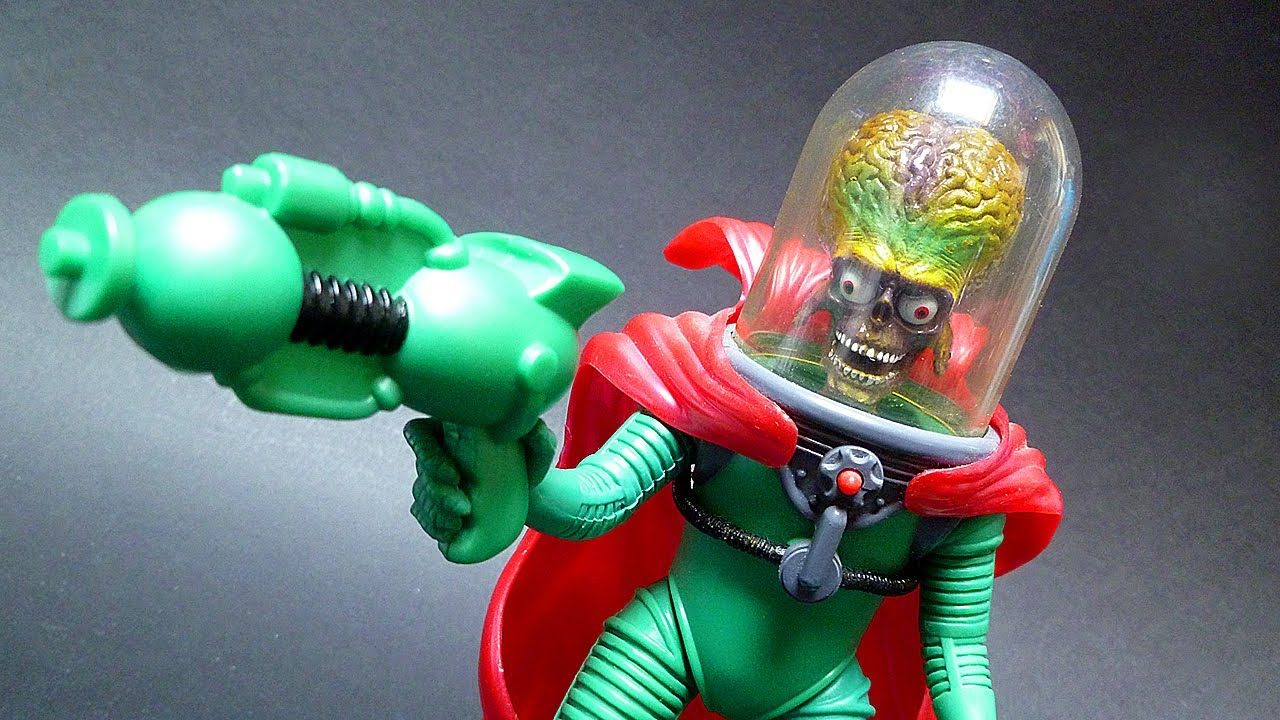Thirty-four years before the guest star-packed Tim Burton film made it to the big screen, Wallace Wood and Norman Saunders created a trading card series called Mars Attacks that still borders on infamy. This card series contained images that were grim, grisly, violent, slightly sexual, and loaded with little Martians gleefully destroying and torturing the populace of Earth. Here there was a perverse creativity at work that, especially given the times, was edgy, shocking, and scared the Ack Ack Ack out of 1960s parents. It also created one of the most sought-after non-sports card sets in the history of card collecting.

Norman Saunders made up the first half of the creative duo responsible for Mars Attacks. Hailing from Minnesota he worked at Fawcett Comics for a time before giving it up to become a freelance pulp artist which brought him to New York. Known for his ability to paint quickly, he often produced over 100 paintings a year. It was this skill that took him places and landed him at Topps. There, he painted over baseball players’ card representations when they found themselves traded to other teams. He was so successful that he landed on their Mars Attacks card series and hand painted each of the images, but we’ll get to more on that in a moment.
Wallace Wood (or Wally Wood or Woody), who contributed to the art design of the series, would be regarded by many as the more celebrated and, sadly, troubled side of this trading card collaboration. He was one of Mad Magazine’s (then with EC Comics) founding cartoonists. His early Marvel work on Daredevil saw him credited with transitioning the hero from the early yellow costume to the red design we know to this day. Over his career, he did a bit of everything (publishing, advertising, packaging, product illustrations, gag cartoons, record album covers, posters, syndicated comic strips, and, yes, trading cards) for a mix of comic and pulp publishers. His witzend magazine is credited with being one of the first independent comics. He even produced adult comics for a time and many of his drawing shortcuts (rolled up in “Panels That Always Work“) became an industry standard. His life would end in tragedy, but his talent was unquestioned and he was inducted into the comic book industry’s Jack Kirby Hall of Fame in 1989, and into the Will Eisner Comic Book Hall of Fame in 1992.

Though the story that ran on the back of the cards was crafted by Len Brown and Woody Gelman, the art side would come together under Saunders (painted images) and Wood (art design) and in many ways they really created the controversy that would follow these cards. The visual images of an Earth invasion and an eventual Mars counterstrike in card form that’s in places filled with torture, slaughter, explicit gore, doggie deaths, and implied sexual content made an impression to say the least.

How did the public react to this card series marketed initially to children? Parents were horror-struck and children couldn’t get enough of them. It’s how these things often work. In part, it may be due to this initial reaction that the series is so valuable to collectors as they hear time and again how parents destroyed card sets to protect their kids, which over time has escalated the overall value of each card.

Distributed in five-cent wax packs, the cards were numbered. This led to the #1 card becoming one of the rarest in higher condition as it’s placement on top of the card set made it very susceptible to wear. A PSA NM-MT 8 version of this card sold for $3,600 in a Mastro Auction sale in May 2008. Similarly susceptible to wear was the final card, the checklist. It suffered the added problem of being a card that encouraged kids to write on it, marking off cards collected as they found them. Other cards in the set that maintain a higher value include #21 (Prize Captive), #36 (Destroying A Dog) and #43 (Blasting The Bug). You can learn a lot more about the various cards and their values by visiting this solid article by Kevin Glew who I credit for much of the information I just referenced above.

The Mars Attacks card series was the first test marketed through a dummy company called Bubbles, Inc. where it ran under the name Attack From Space. Sales proved solid so Mars Attacks as we know it took shape and the public reacted. The outcry was so strong that thirteen of the cards were repainted to pull back on the gore and sexuality. That wasn’t enough, and inquiries from a Connecticut district attorney eventually convinced Topps to halt production completely and a true collectible card series was born.
Since the initial release, a 50th-anniversary set dubbed “Mars Attacks Heritage” was published in 2012 and a host of products have sprung up over the years including everything from comics books to action figures to prints to model kits to so much more, and the 1996 film only adds to the interest.

